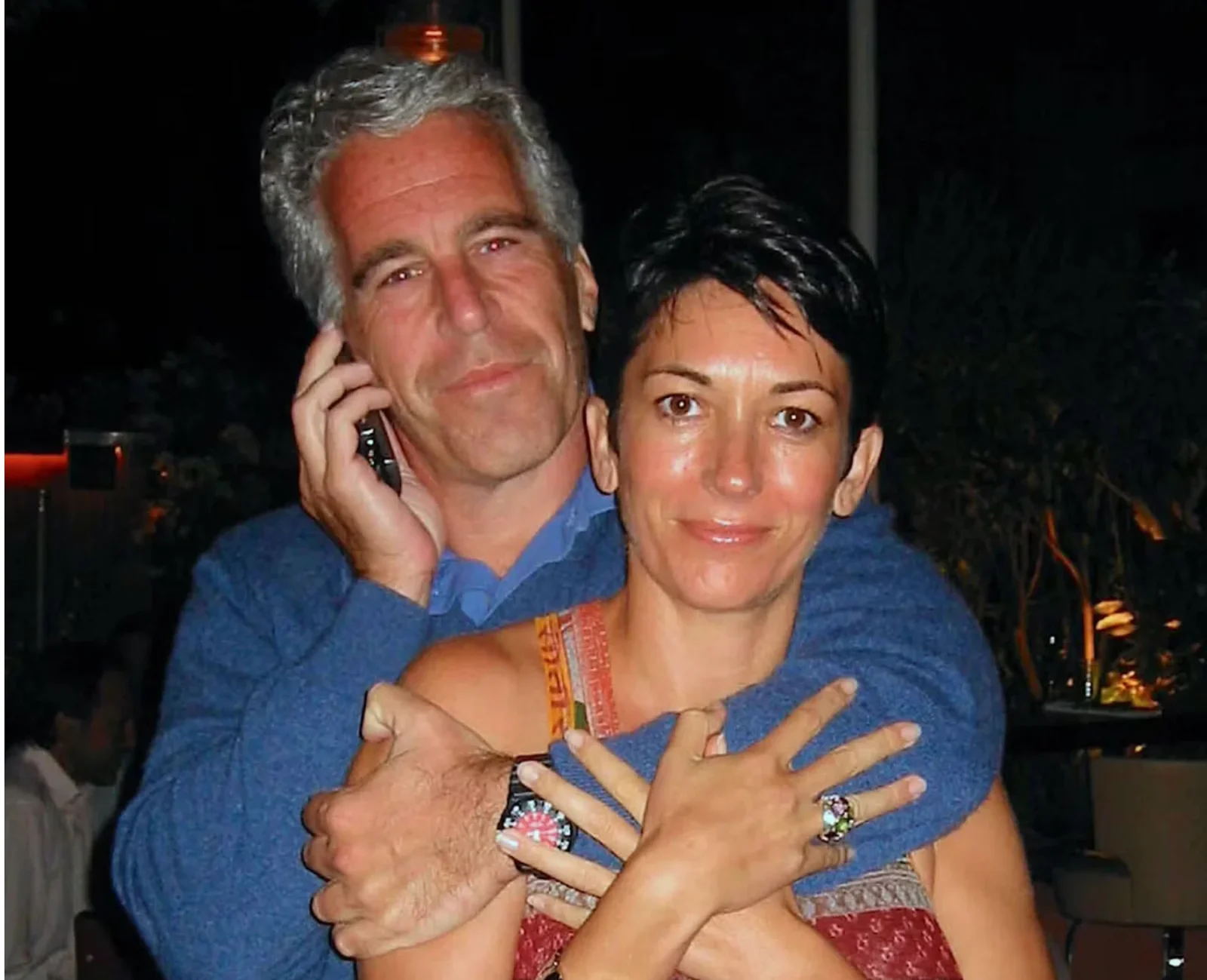World News
TechCrunch+ Roundup: SAFE founder survey, replacing a CEO, how cyber insurance works on July 28, 2023 at 5:21 pm

A friend recently spent months getting into shape for a physical so he could obtain a lower insurance rate. He got the policy and plans to continue working out because he feels so much healthier.
Tech companies that plan to buy cyber insurance are in a similar boat: IT managers must conduct risk assessments and usually add new security measures to qualify, but doing the work can be its own reward.
Full TechCrunch+ articles are only available to members.
Use discount code TCPLUSROUNDUP to save 20% off a one- or two-year subscription.
“In the end, the benefits from working through the process of achieving eligibility for cyber insurance can go far beyond the issuance of a policy,” says security strategist Ilia Sotnikov.
In this article, he explains “what cyber insurance actually covers,” identifies the critical measures most insurers require and explains why implementing multifactor authentication may not cure every problem.
Thanks for reading, and have a great weekend.
Walter Thompson
Editorial Manager, TechCrunch+
@yourprotagonist
Pitch Deck Teardown: Unito’s $20M Series B deck
Pitch Deck Teardown Image Credits: Unito
Unito, a platform that lets customers manage multiple SaaS apps in one place, announced a $20 million Series B round in October 2022.
“Strategically, the path Unito built makes a lot of sense, and I’m not surprised that this narrative resonated with investors,” writes Haje Jan Kamps, who unpacked the lightly-redacted deck:
Cover slide
Highlights/summary slide
Market context slide
Problem slide
Solution slide
Product slide
How it works slide
Product evolution slide
Growth/traction slide
Competition/positioning slide
Team slide
Summary slide
5 founders discuss why SAFEs are better for early-stage and bridge rounds
While SAFE rounds are considered founder friendly, most founders only think they are a good idea for certain rounds. Image Credits: Bryce Durbin
Rebecca Szkutak interviewed five founders who raised money via simple agreement for future equity (SAFE) rounds, instead of going the traditional seed/Series A route.
“By the time a startup reaches the Series A stage, this mechanism is less attractive for a variety of reasons,” she writes.
Here’s who she surveyed:
Zach Blank, founder, Hurry
Amy Divaraniya, founder and CEO, Oova
Tory Reiss, CEO and co-founder, Equi
Arman Hezarkhani, founder and CEO, Parthean
Vishwas Prabhakara, founder and CEO, Honey Homes
Get the TechCrunch+ Roundup newsletter in your inbox!
To receive the TechCrunch+ Roundup as an email each Tuesday and Friday, scroll down to find the “sign up for newsletters” section on this page, select “TechCrunch+ Roundup,” enter your email, and click “subscribe.”
Click here to subscribe
Ask Sophie: Which US visas are best for international founders?
Image Credits: Bryce Durbin/TechCrunch
Dear Sophie,
I am from Georgia but I live in Poland. I created my startup in Delaware a few years ago. To realize it and grow it, I need to move to the U.S.
I have a business plan and a market plan, but no immigration plan. What’s your advice? Which visa should I apply for?
— Global Georgian
Finding CEO: It’s the new ‘Finding Nemo’
Image Credits: Getty Images / Sakchai Vongsasiripat
It’s rare for a founding CEO to take their company public: As of 2015, “only one-third of startups that reached IPO had their founders as CEOs,” writes Haje Jan Kamps.
Replacing a CEO is a complicated process — senior executives and board members should be aligned, founders must be ready to let go, and the winning candidate needs to get started as quickly as possible.
“In the majority of cases, there comes a time that you need to have a professionally credentialed CEO to take the company to the next level,” said DeeDee DeMan, founder and CEO of executive search firm Bench International.
“And that’s completely dependent upon the acceptance and the mentality of the founding CEO.”
How to prevent an ‘operational catastrophe’
Image Credits: MirageC(opens in a new window) /Getty Images
Julia Ivzhenko, head of operations at Futurra, launched a new edtech app with a 20-person team that answered students’ questions in real time.
Network effects drew in a growing stream of new users, but “we concentrated on scaling and didn’t have time to think if the resources of our team were enough to keep going with such speed,” she writes in TC+.
“To prevent the approaching catastrophe,” she developed a five-step plan that analyzed key processes and highlighted bottlenecks that ultimately generated “a timeline for optimization.”
Replacing a CEO is a complicated process: senior executives and board members should be in alignment, and founders must be ready to let go.
News
Epstein Files to Be Declassified After Trump Order

Former President Donald Trump has signed an executive order directing federal agencies to declassify all government files related to Jeffrey Epstein, the disgraced financier whose death in 2019 continues to fuel controversy and speculation.
The order, signed Wednesday at Trump’s Mar-a-Lago estate, instructs the FBI, Department of Justice, and intelligence agencies to release documents detailing Epstein’s network, finances, and alleged connections to high-profile figures. Trump described the move as “a step toward transparency and public trust,” promising that no names would be shielded from scrutiny.
“This information belongs to the American people,” Trump said in a televised statement. “For too long, powerful interests have tried to bury the truth. That ends now.”
U.S. intelligence officials confirmed that preparations for the release are already underway. According to sources familiar with the process, the first batch of documents is expected to be made public within the next 30 days, with additional releases scheduled over several months.
Reactions poured in across the political spectrum. Supporters praised the decision as a bold act of accountability, while critics alleged it was politically motivated, timed to draw attention during a volatile election season. Civil rights advocates, meanwhile, emphasized caution, warning that some records could expose private victims or ongoing legal matters.
The Epstein case, which implicated figures in politics, business, and entertainment, remains one of the most talked-about scandals of the past decade. Epstein’s connections to influential individuals—including politicians, royals, and executives—have long sparked speculation about the extent of his operations and who may have been involved.

Former federal prosecutor Lauren Fields said the release could mark a turning point in public discourse surrounding government transparency. “Regardless of political stance, this declassification has the potential to reshape how Americans view power and accountability,” Fields noted.
Officials say redactions may still occur to protect sensitive intelligence or personal information, but the intent is a near-complete disclosure. For years, critics of the government’s handling of Epstein’s case have accused agencies of concealing evidence or shielding elites from exposure. Trump’s order promises to change that narrative.
As anticipation builds, journalists, legal analysts, and online commentators are preparing for what could be one of the most consequential information releases in recent history.
Politics
Netanyahu’s UN Speech Triggers Diplomatic Walkouts and Mass Protests

What Happened at the United Nations
On Friday, Israeli Prime Minister Benjamin Netanyahu addressed the United Nations General Assembly in New York City, defending Israel’s ongoing military operations in Gaza. As he spoke, more than 100 delegates from over 50 countries stood up and left the chamber—a rare and significant diplomatic walkout. Outside the UN, thousands of protesters gathered to voice opposition to Netanyahu’s policies and call for accountability, including some who labeled him a war criminal. The protest included activists from Palestinian and Jewish groups, along with international allies.

Why Did Delegates and Protesters Walk Out?
The walkouts and protests were a response to Israel’s continued offensive in Gaza, which has resulted in widespread destruction and a significant humanitarian crisis. Many countries and individuals have accused Israel of excessive use of force, and some international prosecutors have suggested Netanyahu should face investigation by the International Criminal Court for war crimes, including claims that starvation was used as a weapon against civilians. At the same time, a record number of nations—over 150—recently recognized the State of Palestine, leaving the United States as the only permanent UN Security Council member not to join them.
International Reaction and Significance
The diplomatic walkouts and street protests demonstrate increasing global concern over the situation in Gaza and growing support for Palestinian statehood. Several world leaders, including Colombia’s President Gustavo Petro, showed visible solidarity with protesters. Petro called for international intervention and, controversially, for US troops not to follow orders he viewed as supporting ongoing conflict. The US later revoked Petro’s visa over his role in the protests, which he argued was evidence of a declining respect for international law.

Why Is This News Important?
The Gaza conflict is one of the world’s most contentious and closely-watched issues. It has drawn strong feelings and differing opinions from governments, activists, and ordinary people worldwide. The United Nations, as an international organization focused on peace and human rights, is a key arena for these debates. The events surrounding Netanyahu’s speech show that many nations and voices are urging new action—from recognition of Palestinian rights to calls for sanctions against Israel—while discussion and disagreement over the best path forward continue.
This episode at the UN highlights how international diplomacy, public protests, and official policy are all intersecting in real time as the search for solutions to the Israeli-Palestinian conflict remains urgent and unresolved.
News
Is a Nuclear-Powered Alien Spacecraft Flying Toward Earth?

A mysterious interstellar object speeding through our solar system has reignited debates about extraterrestrial technology — and whether Earth might currently be under quiet observation.
The object, known as 3I/ATLAS, is only the third confirmed interstellar visitor ever detected. Unlike ordinary comets, however, this cosmic traveler has baffled astronomers with its unusual brightness, strange trajectory, and lack of a visible cometary tail. While most scientists cautiously describe it as a natural body, one leading astrophysicist believes something much stranger is at play.

Harvard Scientist’s Bold Claim
Professor Avi Loeb of Harvard University, head of the Galileo Project, has suggested that 3I/ATLAS may in fact be a nuclear-powered alien spacecraft designed to test how humanity would respond to an interstellar visitor. He argues that its flight path is improbably precise, bringing it close to Mars, Venus, and Earth — a pattern highly unlikely to occur by chance.
Loeb also points out that telescope images show a glow inconsistent with ordinary dust behavior. Instead of trailing behind like a comet, the halo-like light appears to extend in unusual ways, sparking debate about whether the object could be emitting energy of its own.
Headed Toward Earth’s Neighborhood
3I/ATLAS is expected to make its closest approach in late 2025, passing near Mars before swinging by the inner solar system. Although Earth itself will be on the opposite side of the Sun when it comes closest, the alignment will still enable space-based observatories to capture sharper data.

Loeb has called on NASA and other agencies to use spacecraft already stationed near Mars or Jupiter — including the Juno mission — to take high-resolution photographs. He believes such efforts could reveal whether the interstellar object is truly natural, or the first technological probe humanity has ever encountered.
Should We Be Worried?
While most astronomers argue caution before jumping to alien conclusions, Loeb insists that scientific openness is key. “If it’s just a comet, we learn something new,” he said. “But if it’s a spacecraft, it would be the most important discovery in human history.”
For now, 3I/ATLAS remains a mysterious speck on astronomers’ charts, drifting closer with each passing day. Whether it proves to be a frozen remnant of another star system or something far more advanced, the interstellar visitor has already succeeded in one mission: reminding us how vast and unpredictable the universe really is.

 News4 weeks ago
News4 weeks agoDiddy Wakes Up to Knife in Prison Attack

 Business4 weeks ago
Business4 weeks agoHarvard Grads Jobless? How AI & Ghost Jobs Broke Hiring

 Entertainment2 weeks ago
Entertainment2 weeks agoAfter Party: Festival Winner for Best Romantic Short

 News1 week ago
News1 week agoCamp Wackapoo – Rise of Glog Takes Center Stage

 Entertainment1 week ago
Entertainment1 week agoFrancisco Ramos Takes Top Mockumentary Award at Houston Comedy Film Festival

 Politics2 weeks ago
Politics2 weeks agoMamdani’s Victory Triggers Nationwide Concern Over New York’s Future

 Politics2 weeks ago
Politics2 weeks agoTrump’s $2,000 Tariff Dividend Plan: Who Gets Paid?

 News1 week ago
News1 week ago50-Year Mortgages: A Game Changer or a Debt Trap?





























